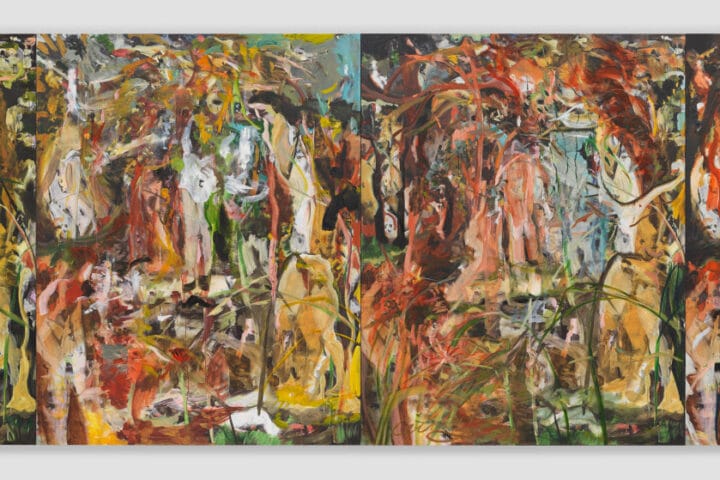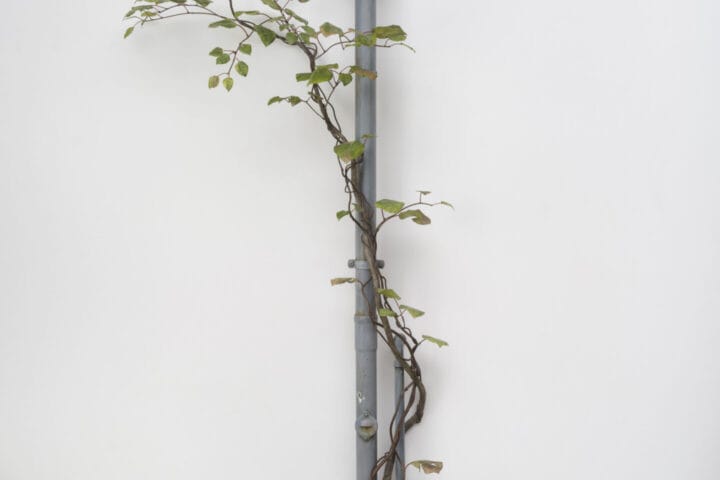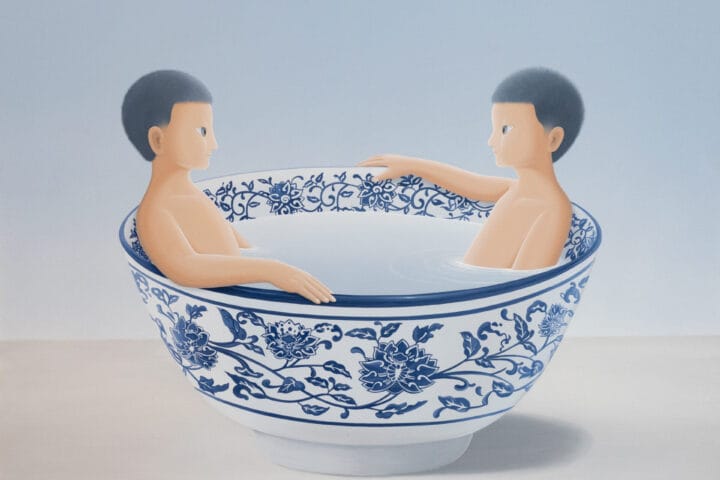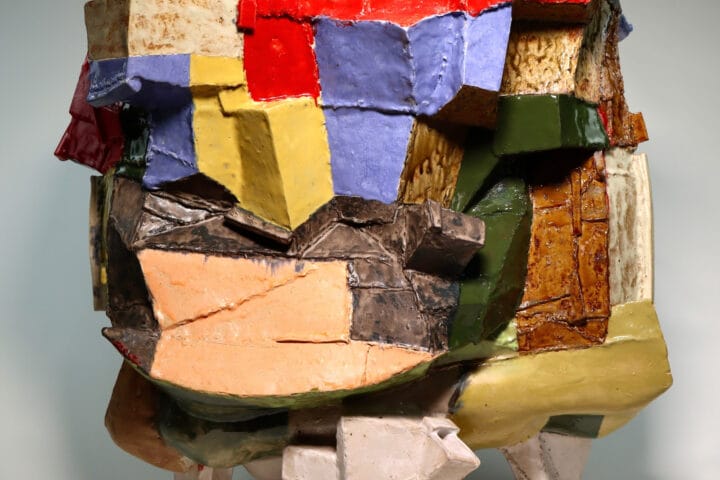NEW YORK – High and Dry, an exhibition of new photographs by Victoria Sambunaris, documents the inexorable evidence of human activity on the desert landscape from the literal to the geological. The work will be on view at Yancey Richardson from January 5 through February 18, 2023, and will feature seven new large-scale photographs traversing the intersection of the natural open terrain and the interventions shaped by climate change, resource depletion, and environmental degradation. An opening will be held on Thursday, January 5, from 6-8 p.m. The artist will be present.
Inspired by the intrepid 19th-century photographers whose work helped to define understanding of the region, Sambunaris embarks upon an extended, solitary road trip each year, capturing the American landscape with a large format, five-by-seven wooden field camera. Highly detailed and dramatically composed, the resulting photographs present a visually refined portrait that communicates a deeply layered sense of place and a nuanced view of the complex issues surrounding American land use and management.
For this new body of work, Sambunaris embarked on three cross-country trips in 2020 and 2021 including nine months while the country experienced a lockdown with a population divided between fear and defiance. Observing where the desert converges with spaces that are aesthetically and politically linked, including Death Valley, the Mojave Desert and the Great Basin Desert, the work questions traditional and clichéd notions of landscape, our place within it, and our collective roles and responsibilities in shaping it the way we do.
Water wars between farmers and municipalities and between northern and southern California have been going on for well over a century. Roman Polanski’s 1974 film Chinatown set in 1930s Los Angeles was the subject of this conflict.
“For over two decades, water levels in the American West have been on a downward trend but recent levels have garnered national media attention bringing water issues to light,” said Sambunaris. High and Dry was born when she stopped to camp at Lake Mead at the Arizona-Nevada border and noticed a thick white bathtub line on the canyon walls. “Since I’d last visited two years prior, Lake Mead had reached a new record low and was down to 27 percent of its capacity. Its depletion was revealing scattered trash, sunken boats, human bodies, and a ghost town that had been submerged since the 1930s.”
While initially imagining the desert as abandoned wasteland wilderness, Sambunaris discovered something else. The desert was alive with human activity: dune buggies and motorcycles, campers and miners, military test sights and art installations. In his 1968 book Desert Solitaire essayist, author and environmentalist Edward Abbey termed this potential for profit through development “industrial tourism.”
Among the locations pictured are Searles Lake, a dry lakebed in the Northern Mojave Desert, where a railway is used to transport commodities such as sulfuric acid, potash, soda ash, borax, coal, minerals and material for the U.S. Naval Air Weapons Station China Lake; the Algodones Dunes, the largest ORV (off-road vehicle) area for sand dunes in the US; Badwater Basin and Zabriskie Point, in Death Valley National Park, an area of ancient lake beds deposited 5-10 million years ago; dune buggy riders in the All American Canal, an 82-mile aqueduct bringing water from the Colorado River to Imperial Valley; a dry lake bed in Joshua Tree’s Mojave Desert currently a haven for off-roaders, target shooters, and campers. In one photograph in Joshua Tree, a caravan of ORV riders is reminiscent of pioneer wagons creating a stockade in this desert landscape.
“Beginning with the lockdown, people burst into the desert in numbers I haven’t seen in more than 20 years driving through the west,” said Sambunaris. “Campgrounds, requiring reservations, were overbooked. Rangers and camp hosts were overwhelmed with hordes of fully outfitted luxury RVs and camper vans. The playas or dry lake beds dot the landscape throughout California and have become a destination for the riding culture where endless vacant land distorts perception. Bands of riders and circles of caravans are sprawled throughout the flat basins, many with American flags emblazoned and clouds of dust as they move about the Mojave Desert floor. The incessant drone is punctuated with bullets ricocheting off rocks during target practice. “
Many parts of the desert are vast and uninhabited, but the areas Sambunaris observed reflected a desert alive with human activity and a sense that conjures the early pioneer entitlement of Manifest Destiny. As the country has populated and resources dwindled, the assertion of ownership and unlimited resources has not and is reflected in the receding water in the West. Fragments of the past meet contemporary conditions and create a captivating backdrop for examining our landscape today.
About Victoria Sambunaris
Victoria Sambunaris was born in Lancaster, Pennsylvania in 1964, and currently lives and works
in New York. She received a B.A .from Mount Vernon College in 1986 and an M.F.A. from Yale
University School of Art in 1999, where she has since held various teaching positions. Her work has been widely exhibited in museums and galleries throughout the United States including National Gallery of Art, Washington, DC; Museum of Modern Art, New York; San Francisco Museum of Modern Art; Albright-Knox Art Gallery, Buffalo; Museum of Contemporary Photography, Chicago; Contemporary Arts Museum Houston; and New Mexico Museum of Art, Santa Fe. Her work can be seen in numerous collections throughout the United States, including those of the Albright-Knox Art Gallery, Buffalo; Lannan Foundation, Santa Fe; Museum of Fine Arts, Houston; The Museum of Modern Art, New York; the National Gallery of Art, Washington, DC; San Francisco Museum of Modern Art; and Whitney Museum of American Art, New York.
Sambunaris has received numerous awards, including the Charles Redd Fellowship Award in Western American History, Brigham Young University (2015); Aaron Siskind Foundation Individual Photographer’s Fellowship (2010); and the Anonymous Was a Woman Award (2010). A monograph of her work, Taxonomy of a Landscape: Victoria Sambunaris, was published by Radius Books in 2013.
About Yancey Richardson
Founded in 1995, Yancey Richardson represents artists working in photography, film, and lens-based media. The gallery is committed to working with museums, private institutions, leading art collectors, and other galleries to advance the careers of the artists they represent. Their current program includes emerging photographers as well as critically recognized, mid-career artists such as Mitch Epstein, Ori Gersht, Anthony Hernandez, Laura Letinsky, Andrew Moore, Zanele Muholi, Mickalene Thomas and Hellen van Meene. Additionally, the gallery has presented exhibitions of historically significant figures such as Lewis Baltz, William Eggleston, Ed Ruscha, August Sander, and Larry Sultan.
Gallery artists have been extensively collected and exhibited by museums worldwide including the Brooklyn Museum of Art, Getty Museum, Centre George Pompidou, Guggenheim Museum, Museum of Modern Art, National Gallery of Art, San Francisco Museum of Modern Art, Stedelijk Museum, Tate Museum and the Whitney Museum of American Art. Gallery artists have been widely published in artist monographs, prominent art journals, and critical texts and reviews of the gallery’s exhibitions have appeared in many publications. Yancey Richardson is a member of the Art Dealers Association of America (ADAA) and the Association of International Photography Art Dealers (AIPAD).
Yancey Richardson Gallery
525 West 22nd Street, New York, NY 10011









